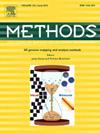从h&e染色组织学图像推断STMCL的多层空间分辨基因表达。
IF 4.2
3区 生物学
Q1 BIOCHEMICAL RESEARCH METHODS
引用次数: 0
摘要
空间转录组学极大地促进了生物学领域中空间基因表达的测量。然而,ST的高成本限制了其在大规模研究中的应用。利用深度学习从h&e染色的组织学图像中预测空间基因表达提供了一种更具成本效益的替代方法,但现有方法无法充分利用空间转录组学和病理图像提供的多模态信息。为此,本文提出了一种新的多模态对比学习框架——STMCL。STMCL集成了组织图像、斑点基因表达特征及其位置等多模态信息,准确推断出空间基因表达谱。我们测试了由10X Genomics平台生成的四种不同类型的多层空间转录组学数据集。结果表明,STMCL在预测空间基因表达谱方面优于基线方法。此外,STMCL能够捕获癌症特异性高表达基因,在保持基因表达原始空间结构的同时保留基因表达模式。我们的代码可在https://github.com/wenwenmin/STMCL上获得。本文章由计算机程序翻译,如有差异,请以英文原文为准。
Inferring multi-slice spatially resolved gene expression from H&E-stained histology images with STMCL
Spatial transcriptomics has significantly advanced the measurement of spatial gene expression in the field of biology. However, the high cost of ST limits its application in large-scale studies. Using deep learning to predict spatial gene expression from H&E-stained histology images offers a more cost-effective alternative, but existing methods fail to fully leverage the multimodal information provided by Spatial transcriptomics and pathology images. In response, this paper proposes STMCL, a novel multimodal contrastive learning framework. STMCL integrates multimodal information, including histology images, gene expression features of spots, and their locations, to accurately infer spatial gene expression profiles. We tested four different types of multi-slice spatial transcriptomics datasets generated by the 10X Genomics platform. The results indicate that STMCL has advantages over baseline methods in predicting spatial gene expression profiles. Furthermore, STMCL is capable of capturing cancer-specific highly expressed genes and preserving gene expression patterns while maintaining the original spatial structure of gene expression. Our code is available at https://github.com/wenwenmin/STMCL.
求助全文
通过发布文献求助,成功后即可免费获取论文全文。
去求助
来源期刊

Methods
生物-生化研究方法
CiteScore
9.80
自引率
2.10%
发文量
222
审稿时长
11.3 weeks
期刊介绍:
Methods focuses on rapidly developing techniques in the experimental biological and medical sciences.
Each topical issue, organized by a guest editor who is an expert in the area covered, consists solely of invited quality articles by specialist authors, many of them reviews. Issues are devoted to specific technical approaches with emphasis on clear detailed descriptions of protocols that allow them to be reproduced easily. The background information provided enables researchers to understand the principles underlying the methods; other helpful sections include comparisons of alternative methods giving the advantages and disadvantages of particular methods, guidance on avoiding potential pitfalls, and suggestions for troubleshooting.
 求助内容:
求助内容: 应助结果提醒方式:
应助结果提醒方式:


